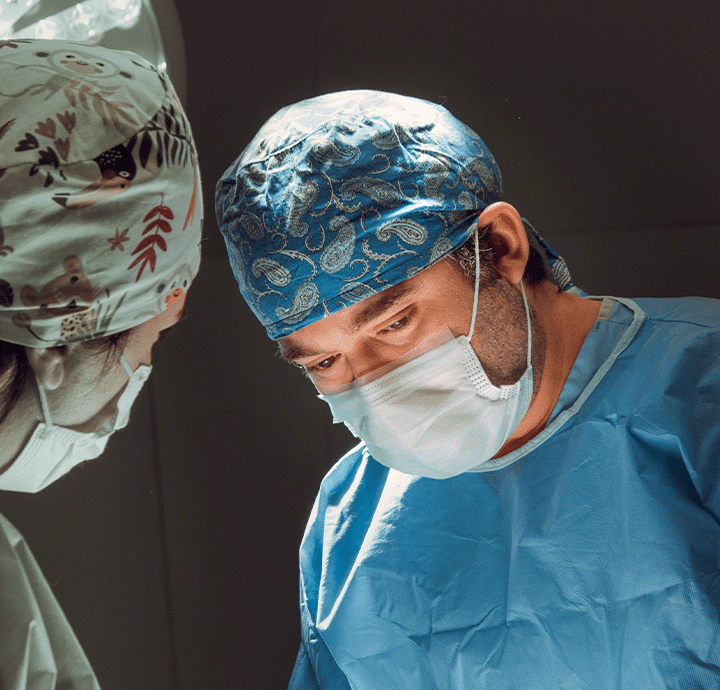
Ethnic Rhinoplasty for African-American Patients: Expert Care with Dr. Fatih Mehmet Hanege
Preserving Identity and Function with Tailored Rhinoplasty
In recent years, ethnic rhinoplasty has shifted from a one-size-fits-all approach to a deeply personalized procedure—especially for individuals of African-American origin. Unlike standard nose reshaping, ethnic rhinoplasty must balance aesthetic enhancement with preservation of ethnic identity and functional improvement.
Dr. Fatih Mehmet Hanege, with over 15 years of ENT and facial surgery experience in Istanbul, is recognized for his expertise in structural grafting, bridge augmentation, and tip refinement tailored to the thicker nasal skin and broader nasal base commonly seen in people of African descent. With a detailed, cultural-sensitive approach, his international patients consistently receive world-class care, from the initial consultation through recovery.
Understanding African-American Nasal Anatomy
In the noses of people of African origin, there are often unique features such as a wide nasal base, flat bridge, thicker skin, and a short columella. These characteristics require advanced techniques, including:
- Bridge augmentation for enhanced projection
- Reinforced tip grafting for definition
- Alar base reduction for nostril symmetry
- Septal or structural grafts for function and shape
The Patient Journey: Quality Care at Every Stage
1. Initial Consultation & Virtual Evaluations
Virtual consultations help align cultural identity with surgical outcomes. Patients share their current nose pictures or videos, medical details, goals, breathing concerns, and receive expert feedback from Dr. Hanege team.
3. Surgical Planning & Technique Selection
Surgical Planning & Technique Selection
Open technique is most commonly used for ethnic rhinoplasty due to the precision required in cartilage work. Closed approaches may be used for minor refinements.
4. Procedure Execution
Under general anesthesia, surgery takes around 3–4 hours. Cartilage may be harvested from the septum or rib if necessary, ensuring durable, ethnic-conscious results.
5. Post-Operative Support
Patients rest overnight in a modern hospital in Istanbul, with multilingual care and dedicated coordination. Dr. Hanege’s team maintains close contact throughout recovery.
6. Long-Term Follow-Up
Check-ins at 1 week, 1 month, 3 months, 6 months, and 12 months ensure safe, beautiful healing. International patients benefit from remote follow-up support.
Why Choose a Specialist in Ethnic Rhinoplasty?
Ethnic rhinoplasty demands not only technical skill but also cultural awareness. Surgeons unfamiliar with ethnic techniques risk over-projection, improper nasal length, or unnatural tip refinement. Dr. Hanege’s advanced approach respects your heritage while improving confidence and function.
Aftercare & Long-Term Outcomes
Dr. Hanege’s recovery protocol includes:
- Avoiding glasses and facial pressure up to 6 months
- Sun protection and proper nasal hygiene
- Careful management of pigmentation and scarring concerns
- Regular follow-up appointments or contact over WhatsApp
Frequently Asked Questions
1- Will I lose my cultural features after surgery?
No. Ethnic rhinoplasty aims to refine your appearance while preserving unique identity traits.
2- Is rhinoplasty riskier for people with ethnic origins?
There’s a slightly higher risk of pigmentation or hypertrophic scarring in patients of ethnic origins, which Dr. Hanege proactively manages with proven surgical methods tailored to diverse skin types.
3- How long should I stay in Turkey?
Most international patients remain for 5–7 days post-op, then complete follow-ups remotely.
Ready to Learn More?
Explore our full guide to Ethnic Rhinoplasty or discover the 7 Steps to Natural Rhinoplasty. You can also view before-and-after results and patient feedback on our Instagram page @drhanege.

Who Is a Good Candidate for Ethnic Rhinoplasty?
The ideal candidate is someone in good general health, over the age of 18, and looking to enhance nasal appearance while retaining ethnic identity. Those who have wide nostrils, flat bridges, or thick nasal skin due to heritage may benefit most from an ethnic rhinoplasty approach. Functional concerns like breathing difficulties can also be addressed during the procedure.
Combining Ethnic Rhinoplasty with Other Procedures
For patients seeking a comprehensive facial enhancement, ethnic rhinoplasty can be combined with:
- Chin augmentation
- Eyelid surgery (blepharoplasty)
- Buccal fat removal
Such combinations are planned carefully to maintain facial balance while respecting ethnic features.
Patient Education & Informed Decision-Making
Dr. Hanege places strong emphasis on patient education. Every consultation includes detailed discussions of anatomical expectations, cultural considerations, and surgical possibilities. Patients are encouraged to ask questions and make fully informed decisions with clarity and confidence. For more information on the surgical approach and clinical results in ethnic rhinoplasty, see this study on PubMed: Ethnic Rhinoplasty: An Evaluation of Clinical Outcomes. For Asian Rhinoplasty options, visit this guide.

